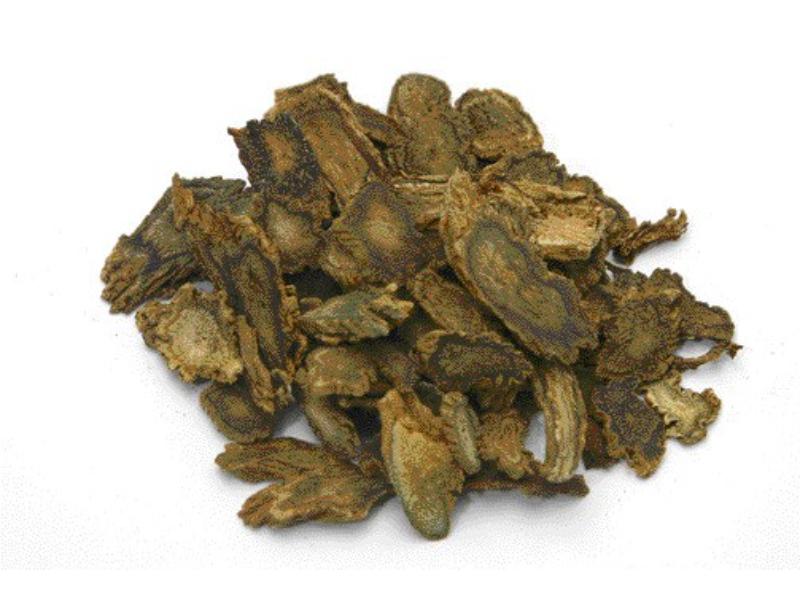Search in medicinals
Dipsaci Radix
Dipsacus [root]
续断 〔續斷〕 xù duàn

Alternate English names: Japanese teasel root
Alternate Chinese names: 川断 chuān duàn; 川续 chuān xù; 川续断 chuān xù duàn; 六汗 liù hàn
Kingdom: Plant
Origin in PRC Pharmacopoeia: Dipsacus asperoides C.Y. Cheng et T.M. Ai. (PRC Pharmacopoeia)
Origin in unofficial sources: Dipsacus asper Wall.; Dipsacus japonicus Miq.; Dipsacus asperoides C.Y. Cheng et T.M. Ai*
Use: Medicinal
Category: Supplementing agents / Yáng-supplementing agents
Properties: Bitter, sweet, acrid; slightly warm.
Channel entry: Liver and kidney channels.
Actions and indications:
- Supplements the liver and kidney, strengthens sinew and bone, treats injuries and joins bone: Lumbar pain and weak legs; wind-cold-damp impediment; injury from knocks and falls including bone fractures, sinew damage, pain and swelling.
- Stanches bleeding and quiets the fetus: Flooding and spotting, bleeding in pregnancy, habitual miscarriage, and stirring fetus.
Dosage and method: Oral: 10–15g in decoctions. Use the raw form for impediment or injuries; use the stir-fried form for stirring fetus and bleeding in pregnancy. Also used externally.
Warnings: Contraindicated in heat patterns of wind-damp impediment.
Product description: The roots are cylindrical, of varying length, and 0.4–1 cm in diameter. Their surface is earth brown in color and bears longitudinal wrinkles or furrows and transversely configured lenticels 2–4 mm in length. They are soft and supple and break with difficulty to produce an uneven fracture. The decocting pieces are oblique slices or longitudinal slices of short sections.
Quality: Dry, fat roots with sticky, but not stringy flesh that has a slightly green tinge are the best.
Production area: Húběi, Sìchuān, Húnán, Guìzhōu, Shǎnxī (Shaanxi), Yúnnán.
Etymology: Xù duàn 续断, literally joins breaks,
reflects the use of this agent in the treatment of broken bones and ruptured sinews.